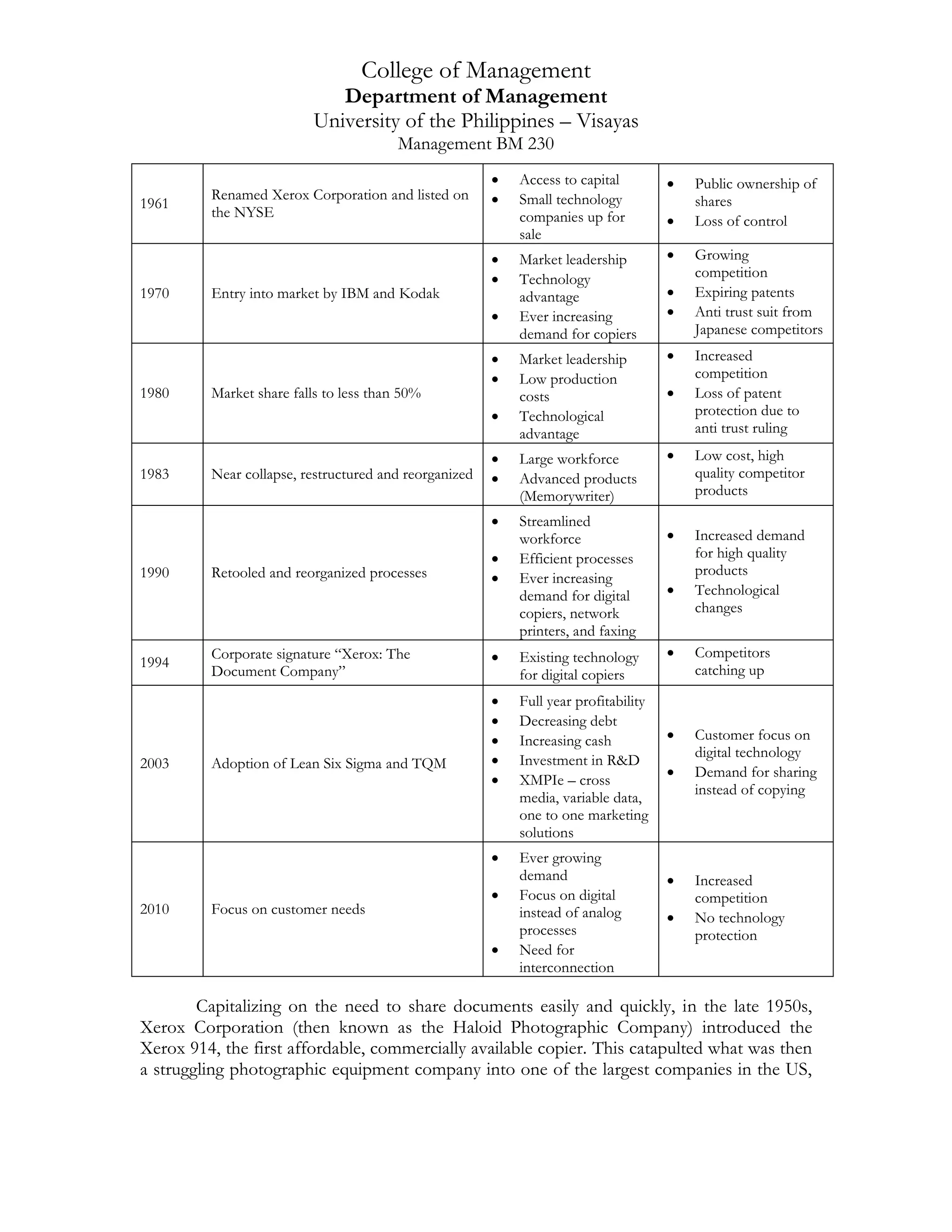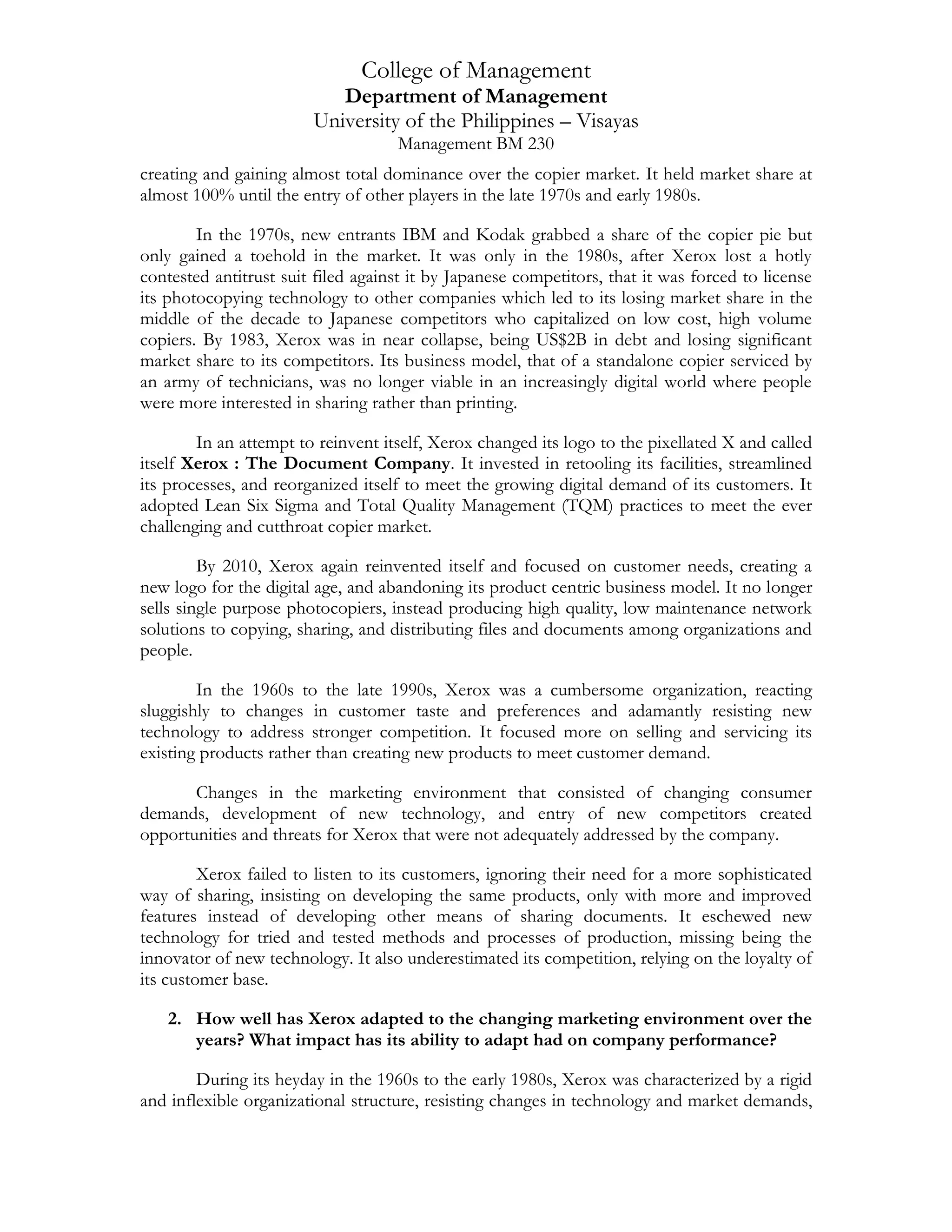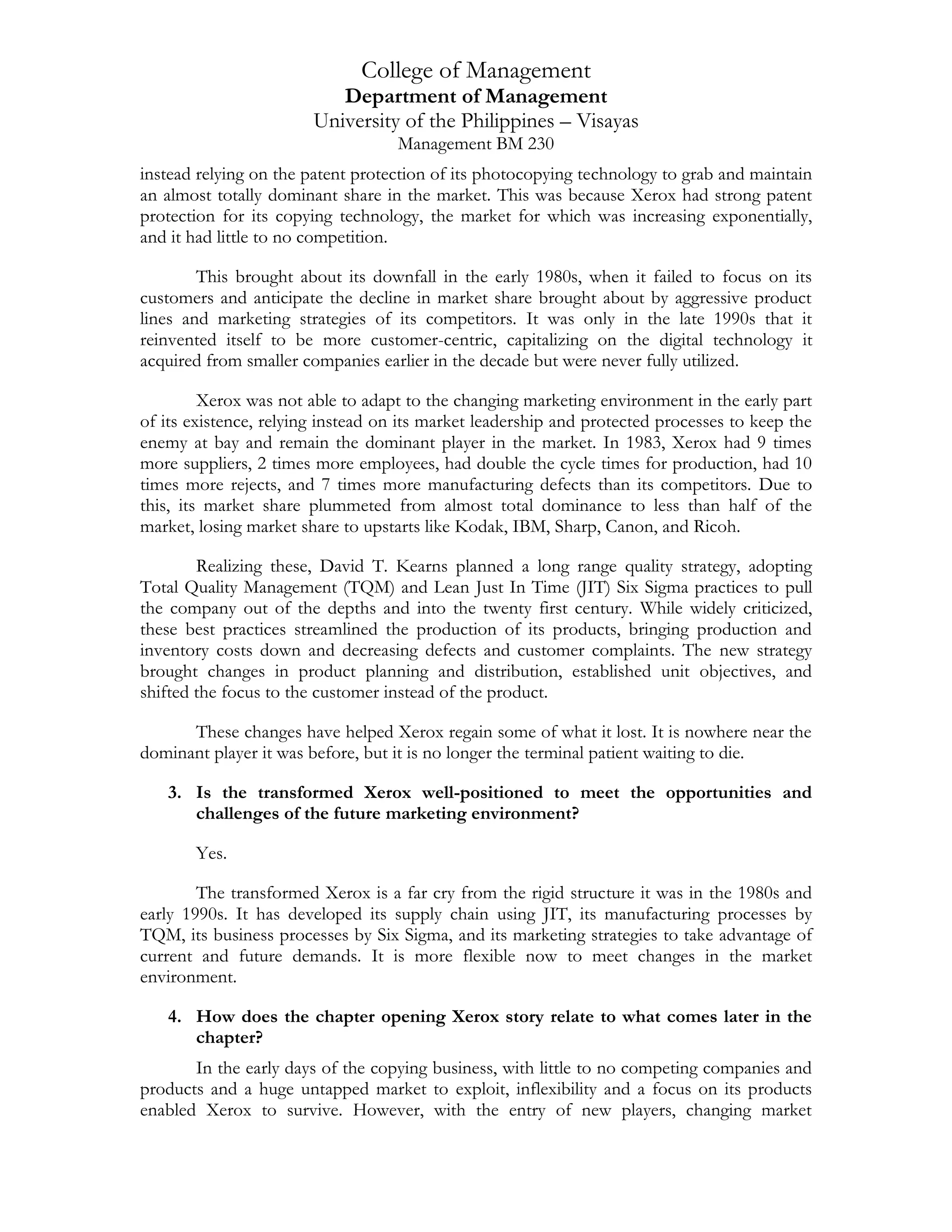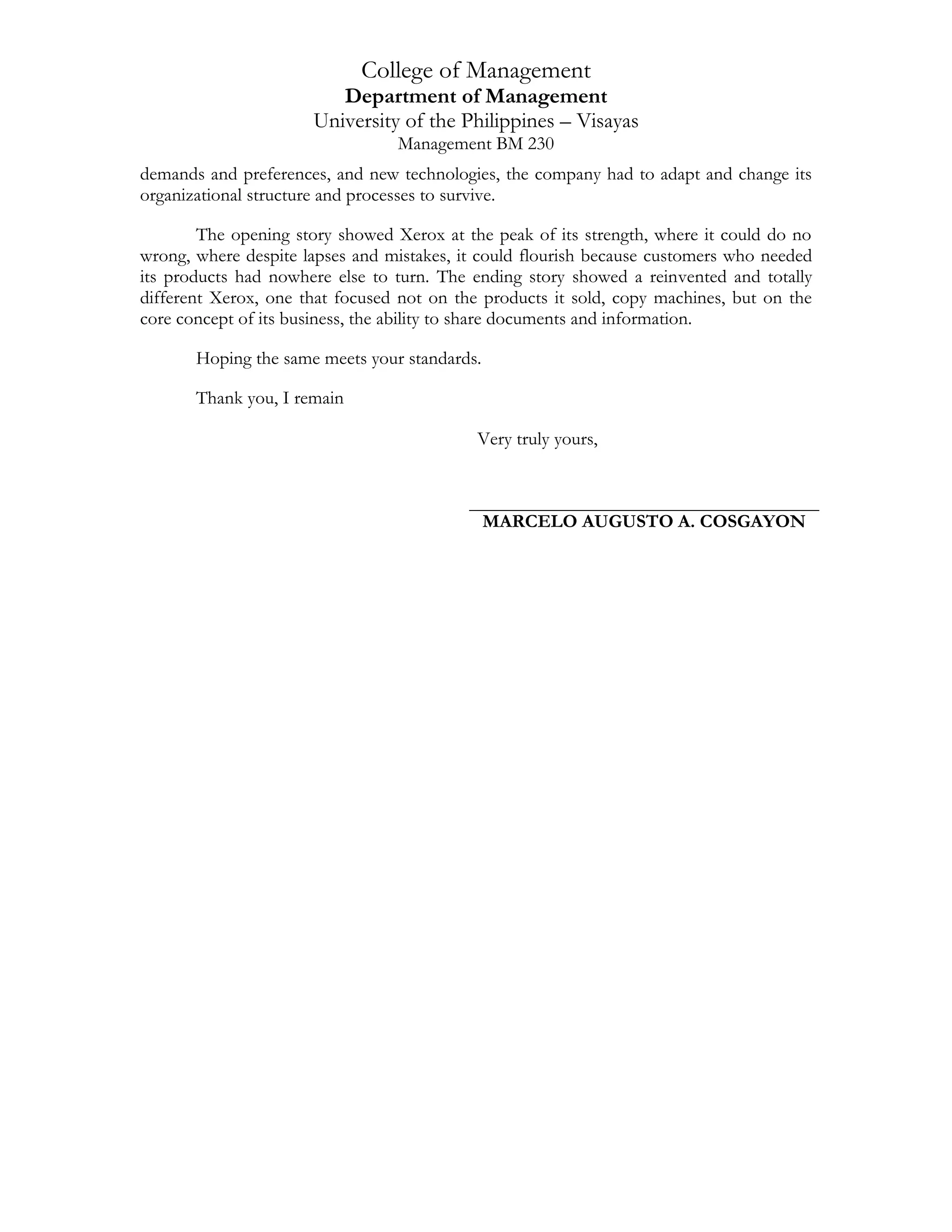The document provides a case study report on Xerox Corporation, analyzing how changes in the marketing environment created opportunities and threats for the company over time. It describes how Xerox originally dominated the copier market in the 1950s-1980s but failed to adapt to technological changes and new competitors. This caused its market share to plummet to less than 50% by the 1980s, bringing the company to near collapse. The document outlines how Xerox reinvented itself in the late 1990s and 2010s by focusing on customer needs and digital solutions rather than standalone copiers, allowing it to better position itself for future opportunities and challenges.




